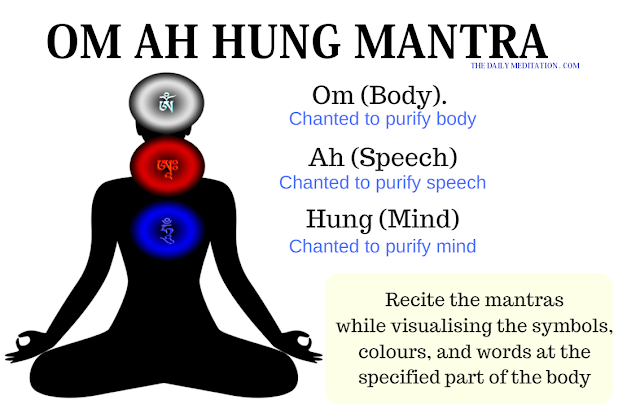Ngang trak jikpa dralwe o lam la
And on the path of light with its terrifying sights and sounds
Chomden o pak me kyi dun ne su
May the Buddha Amitabha, “Boundless Light”, lead the way
Chang sem khor tsok gyatso gyab ne kyor
As a vast retinue of bodhisattvas support us from behind
Jik rung khorwe yang sa lam drol ne
Then, saved from saṃsara's terrible abyss
Dechen pemo kope shying kham su
May we be reborn in the heart of a lotus flower
Peme nyingpor trung shing sangye jel
In the blissful land of Lotus Array, there to meet the Buddhas
Dampe cho tob sa lam tar chin ne
Receive the sacred Dharma, and complete the paths and stages
Dzok sangye tob kha nyam sem chen kun
Once perfectly awakened, may we become great guides
Ring min de ne dewar go nupe
Capable of leading all beings, as infinite as space
Depon chenpor daknyi gyurwar shok
Swiftly, from one blissful state to another
Sherab yeshe salwe dronme di
May this lamp of discerning and primordial wisdom
Lei nyon drip nyi mania Rab sells shying
Banish entirely the darkness of karmic and emotional veils
Yang dak lam gyi nangwa cher gye ne
Greatly enhance the light of the pure, authentic path
Ten de gyalsar gope dronmer shok
And illuminate the way to the kingdom of everlasting bliss
When you have made this prayer of aspiration, offer the lamp to the recipients in front. Compose by the 14th Karmapa at his great seat of Akanistha Tsurphu.
Dana (Donations for our Buddhist research and development)
Do you earnestly cherish our devoted work? Assuming this is the case, we are delighted that you are finding our blog useful and valuable. Would you consider making a donation for our Buddhist research and development?
We need your help to secure the future of scholarly interaction with Buddhism. Since our very first publication of Dharma works and activities in the year 2008, we had been effortlessly providing free distribution of Dharma posts and articles throughout the previous 13 years. We have exceptionally constrained supports and do not receive subsidized or funding from people in general.
Please help us and to develop our Dharma activities that will not only benefit you, but to all Dharma readers on the planet. Please consider showing your support. Your generosity will certainly help us to enhance our work and to accomplish for a better and brighter prospect to come.
Thank you for reading, may you find peace and great bliss. With your support it helps to spread the Buddha’s precious teachings and turning the Dharma wheels in the world.
Aspiration For Bodhichitta
For those in whom the precious Bodhichitta has not arisen
May it arise and not decrease
But increase further and further.
Dedication of Merit
By this merit may we obtain omniscience then.
Having defeated the enemies wrong-doings.
May we liberate migratory from the ocean of existence.
With its stormy waves of birth, old age, sickness and death.
*Note
I do not own or infringe any copyright of the picture(s).
Picture(s) courtesy and credit to the rightful distributors and or studios.
Picture(s) is/are intended for editorial use only.






































